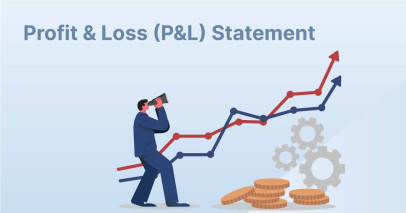Introduction
A profit and loss statement (P&L), also known as an income statement, is a financial report that summarizes a company's revenues, expenses, and net income over a specific period. It's a crucial tool for understanding your business's financial health and making informed decisions.
Key Components of a Profit and Loss Statement
- Revenue: This section lists all the income your business generates from sales of goods or services.
- Cost of Goods Sold (COGS): This includes the direct costs associated with producing or selling your products or services.
- Gross Profit: This is the difference between your revenue and COGS.
- Operating Expenses: These are the costs incurred in running your business, such as rent, utilities, salaries, and marketing expenses.
- Operating Income: This is the profit remaining after subtracting operating expenses from gross profit.
- Other Income/Expenses: This section includes any additional income or expenses not directly related to your core operations.
- Net Income: This is the final profit or loss after considering all income and expenses.
How to Read and Analyze a P&L Statement
- Compare to Previous Periods: Analyze how your revenue, expenses, and net income have changed over time.
- Calculate Key Ratios: Use ratios like gross profit margin, operating profit margin, and net profit margin to assess your business's profitability.
- Identify Trends: Look for trends in your expenses and revenue to identify areas for improvement or concern.
- Benchmark Against Industry Standards: Compare your performance to industry benchmarks to see how your business stacks up.
Example P&L Statement Analysis
Let's say your business's gross profit margin has decreased from 40% to 35% over the past year. This could indicate that your COGS have increased more rapidly than your revenue, which could be due to rising material costs or inefficiencies in your production process. You might need to investigate these factors and implement strategies to improve your gross profit margin.
Conclusion
Understanding your business's profit and loss statement is essential for making informed decisions and ensuring your business's long-term success. By analyzing your P&L, you can identify areas for improvement, track your financial performance, and make data-driven decisions to optimize your business operations.





